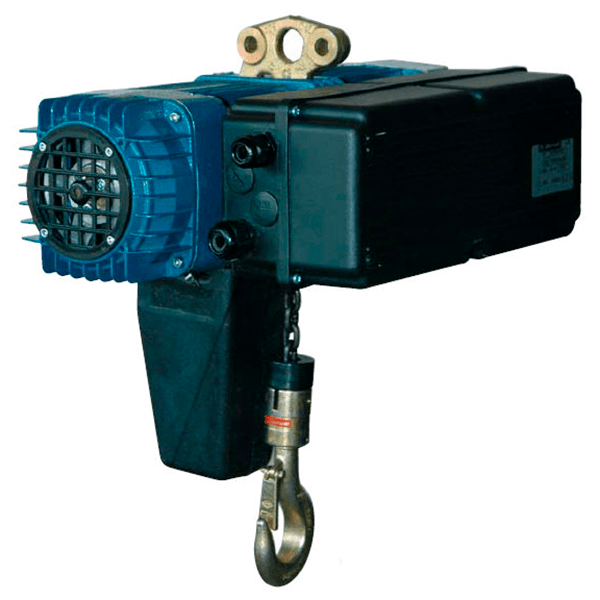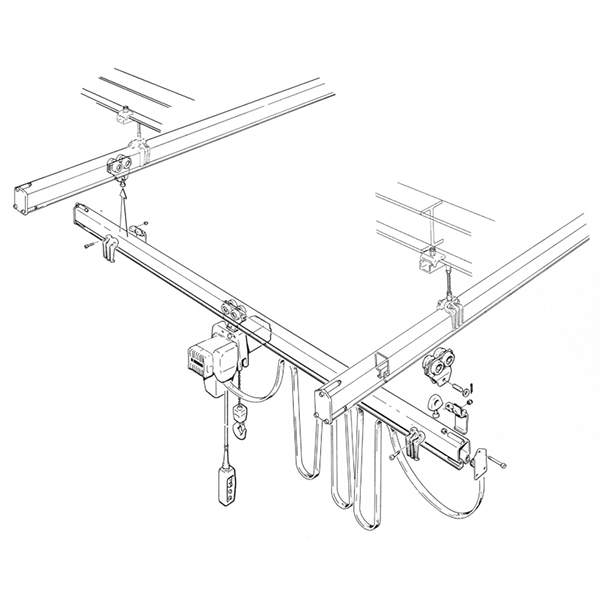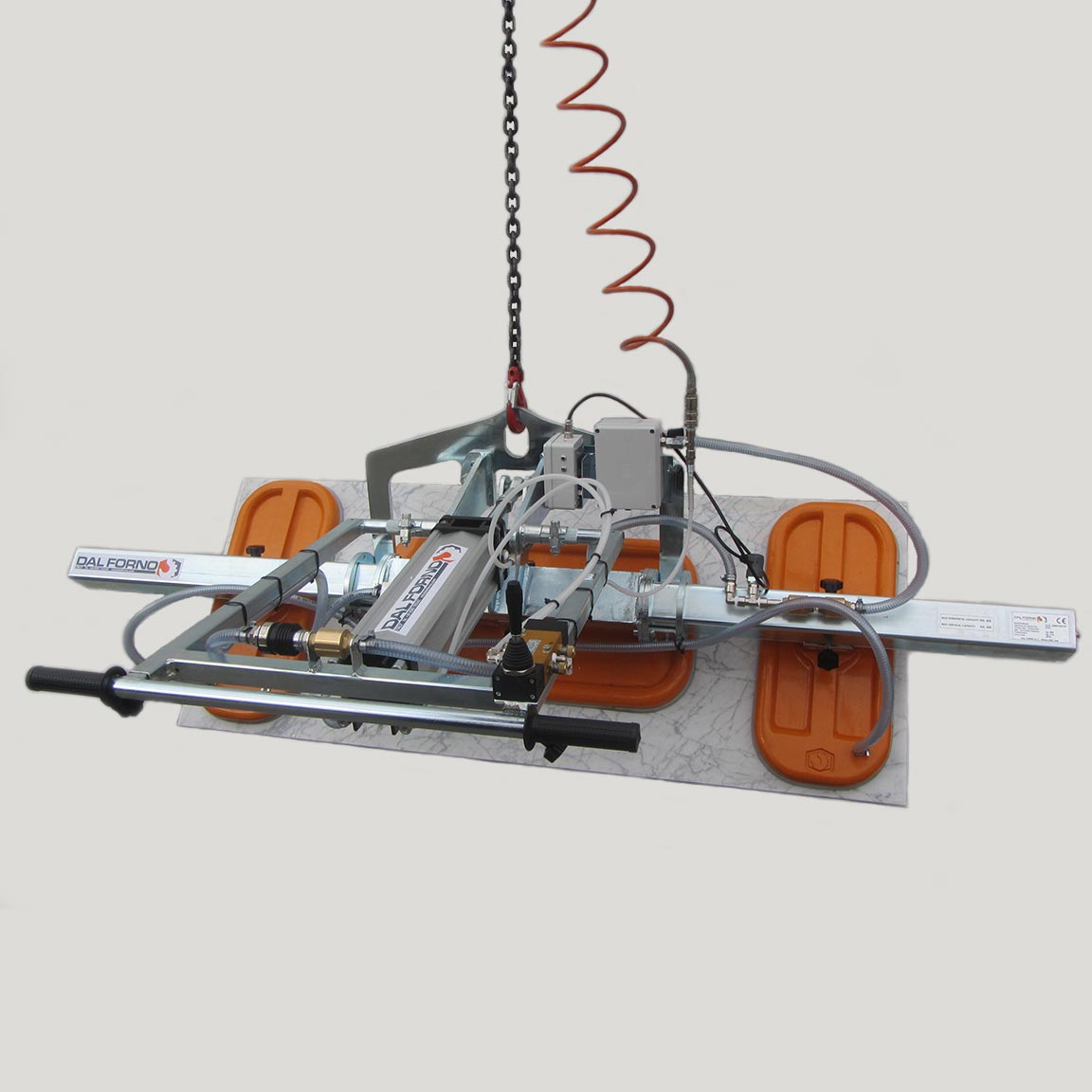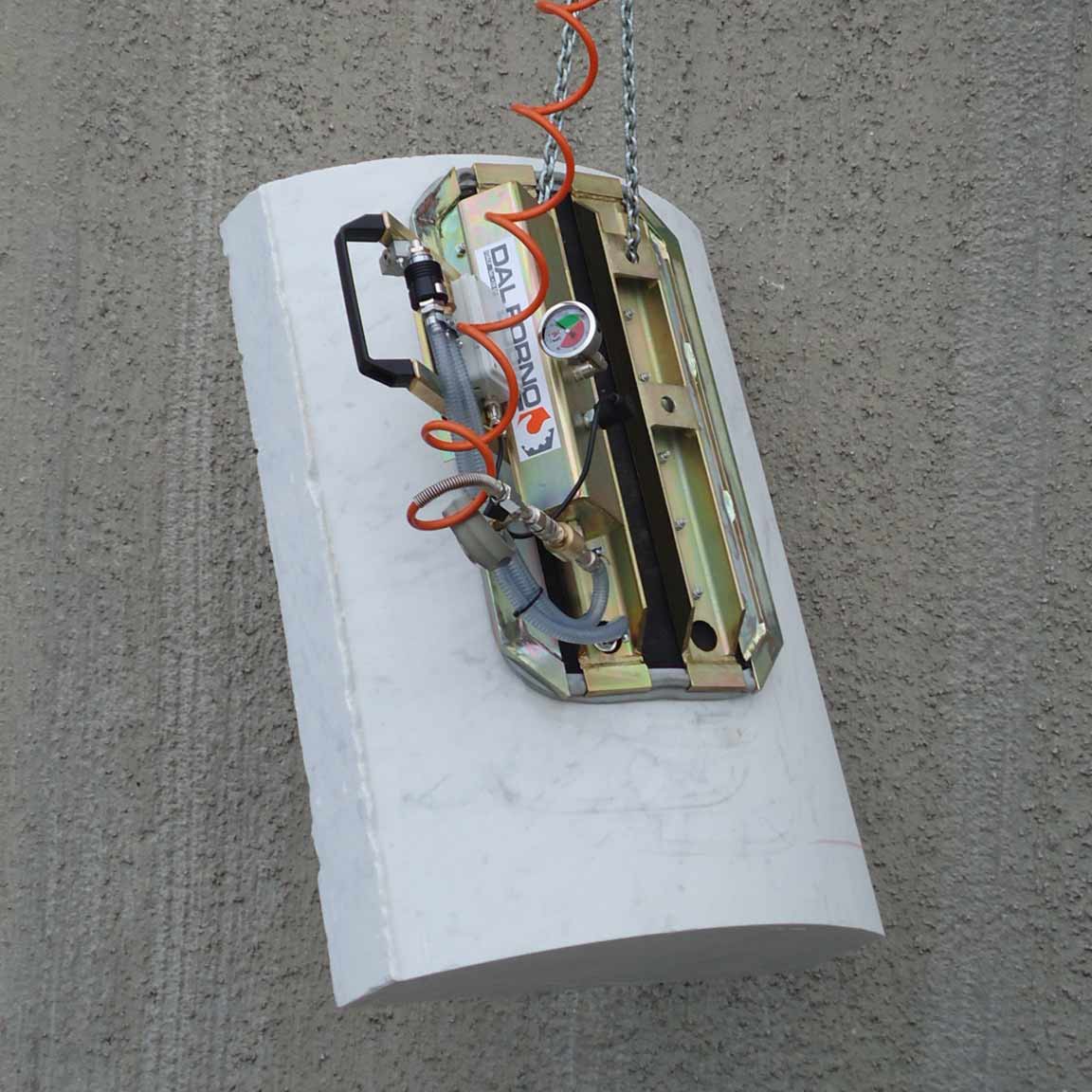Jib Cranes for Manufacturing Facilities
A Cost-Effective and Versatile Solution
for Lifting and Handling Materials

Jib Cranes for Manufacturing Facilities
A Cost-Effective and Versatile Solution
for Lifting and Handling Materials
What is a jib crane?
Jib cranes are a type of crane that is mounted on a column or wall and has a horizontal arm that can be rotated to lift and move objects. They are a cost-effective and practical solution for lifting and handling materials in a variety of industrial and commercial settings.
They are designed to handle goods inside a plant, in a yard or next to processing machinery.
They can also serve as auxiliary lifting devices under overhead cranes.
What are the main functions of jib cranes?
There are three main functions of a jib crane:
- Vertical lifting of a load, using the hook of the lifting unit, generally consisting of a chain hoist;
- Traslation of the load with the aid of a hoist-carrying trolley, electric or manual, which slides along the crane arm (with the exception of the crane with articulated arm, where normally the hoist does not slide with the trolley, because the hoist is fixed to the end of the arm);
- Rotation of the load, around the constraint axis, by means of a manual pushing action on the load itself, or electrically, via a gear motor, covering the circular area beneath it, constrained by the rotation range of the jib.
Jib cranes can be used for a variety of lifting and handling tasks:
- Loading and unloading trucks
- Picking and placing materials from storage shelves
- Moving materials between workstations
- Positioning materials for processing
- Lifting and installing equipment
- Maintaining and repairing equipment
Where are jib cranes most appropriate?
Jib cranes are well-suited for use in restricted work areas because of their compact size and flexibility. The arm of a jib crane can be rotated to reach over and around obstacles, and the crane can be installed in areas with low ceilings. This makes jib cranes an ideal solution for lifting and handling materials in areas where other types of cranes, such as overhead cranes, would not be practical.
Jib cranes can be configured in various ways to suit users’ specific spaces and needs. For example, jib cranes can be equipped with different types of hoists, lifting beams, and other accessories, such as vacuum lifters, to handle a variety of materials, from stone, to metal, to glass.
Jib cranes can also be installed with multiple arms, to increase lifting capacity or to reach multiple areas.
What are the different configurations of jib cranes?
There are different installation types for jib cranes, each with their own advantages and disadvantages. The most common include:
- Freestanding jib cranes: Freestanding jib cranes – also called floor mounted jib cranes – are the most common type of jib crane. They are supported by a column or pedestal and can be rotated 360 degrees. Freestanding jib cranes are available in a variety of capacities and sizes, making them suitable for a wide range of applications.
- Wall-mounted jib cranes: Wall-mounted jib cranes are mounted to a wall and can be rotated 180 degrees. They are typically smaller and less expensive than freestanding jib cranes, but they have a lower lifting capacity. Wall-mounted jib cranes are ideal for use in areas with limited space.
- Pillar-mounted jib cranes: mounted on a column of the building structure, are a common type of jib crane. They are known as column-mounted jib cranes or pillar-mounted jib cranes or mast-type jib cranes. They have a variety of lifting capacities and reaches. They are often used in manufacturing facilities and warehouses.
What are
the different models
of jib cranes?
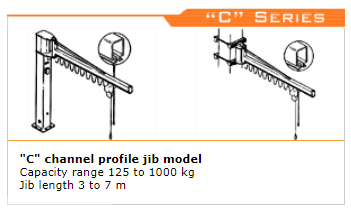
Channel Profiled jib crane
is a type of jib crane that uses a channel-shaped beam to support the arm of the crane. Channel profiled jib cranes are lightweight and easy to install, making them ideal for use in a variety of settings.
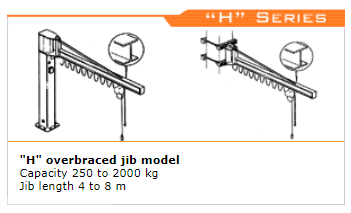
Overbraced jib crane
is a type of jib crane that uses a system of braces to support the arm of the crane. Overbraced jib cranes are very rigid and have a high lifting capacity, making them ideal for use in heavy-duty applications.
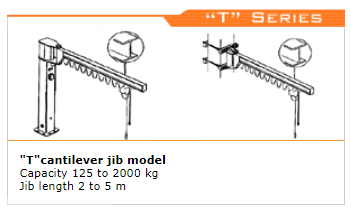
Cantilever jib crane
is a type of jib crane that has a single arm that is attached to a column or wall. Cantilever jib cranes are simple and easy to use, but they have a lower lifting capacity than other types of jib cranes.
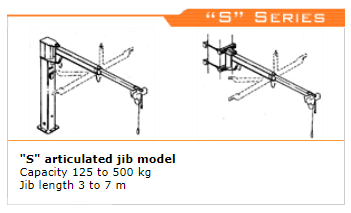
Articulated jib crane
is a type of jib crane that has two or more arms that can be articulated to reach over and around obstacles. Articulated jib cranes are ideal for use in confined spaces and for lifting and handling materials in hard-to-reach areas.
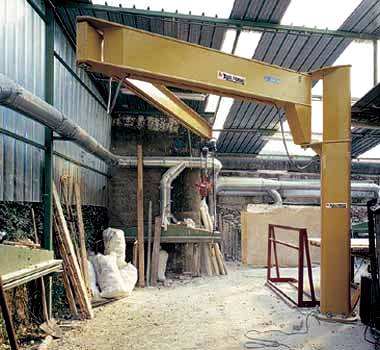
HOW TO CHOOSE THE RIGHT JIB CRANE
FOR YOUR APPLICATION?
Key parameters to be observed when choosing the jib crane are:
- Lifting Capacity: The lifting capacity of the jib crane must be sufficient to handle the heaviest loads that will be lifted.
- Type of jib crane: There are several different types of jib cranes available, each with its own advantages and disadvantages. The best type of jib crane for your application will depend on your specific needs.
- Functional dimensions: height of the column, and specifically height under the jib, which determines the hook run of the hoist with the vacuum lifter attachment. The resulting height must be sufficient to lift materials to the desired height. The height of the jib crane must be sufficient to lift materials to the desired height.
- Reach / Length of the arm (jib): must be selected so as to guarantee the functional coverage of the area to be served in consideration of the surrounding encumbrances.
- Type of movement: manual or electric in relation to the characteristic of the mass to handle and the type of arm already selected (channel profile jib – underbraced – overbraced – articulated).
- Hoisting speed: the nature of the load, delicate or not, determines the choice of the most suitable lifting speeds. In some cases two speeds hoists can be used, with slow positioning.
- Area of use: the jib craned can be used inside and/or in a covered area, sheltered from bad weather and wind.
In case of use outside measures must be taken in relation to the surface treatment (sandblasting – painting) as well as a system of stopping brake and an adequate protection covers.
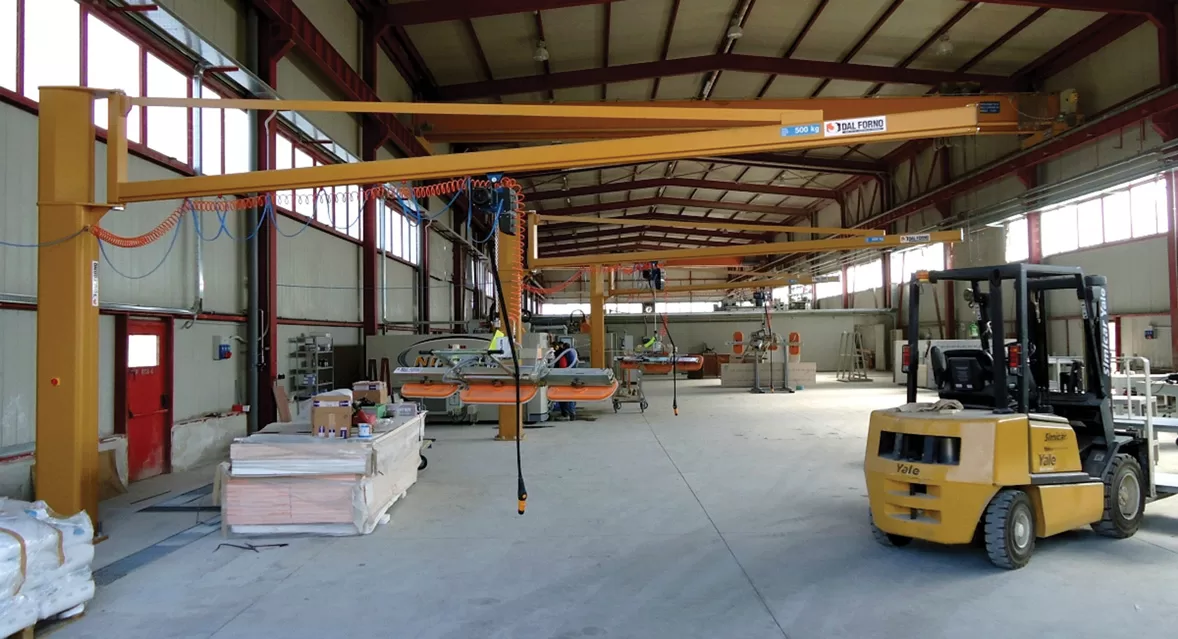
Advantages of Our Jib Cranes
Our jib cranes are among the best on the market
for a number of reasons, including:
- Construction quality
Our cranes are made with high-quality materials
and built to the highest safety standards. - Innovative design
Our cranes are designed to be efficient and easy to use. - Customization
Our cranes can be customized to meet
the specific needs of each customer.
Here are some specific details that we can highlight
to demonstratethat our jib cranes are among the best:
- We use only high-quality materials,
such as high-strength steel
and high-quality powder coatings.- Our engineers carefully design our cranes
to ensure that they are efficient and easy to use.- We offer a wide range of customizations
to meet the needs of every customer.
We believe that these factors set us apart from our competitors
and allow us to offer the best jib cranes on the market.
If you are looking
for a high-quality and reliable jib crane
• contact us today •
to learn more about our solutions
You might also be interested in:
Electric chain hoists
ideal complement
for the lifting systems
Overhead Lifting Systems
allows handling of the loads
above the working area
VL series lifters
compact – pneumatic tilting
vacuum lifters
OMNIA
flexible pads vacuum lifters
for concave or convex surfaces

